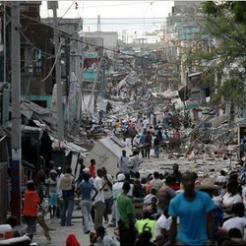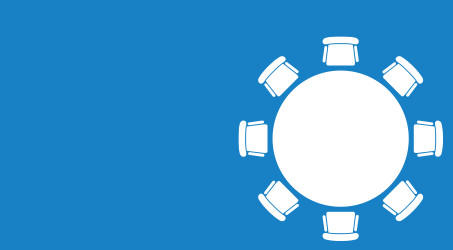Andrew Chaggar reports from the frontline of the Haitian recovery in the second of his blogs discussing the underlying issues in returning Haiti's infrastructure.
This month I’d like to talk about the context in which European Disaster Volunteers (EDV) is working and the underlying issues which led to the Haitian disaster and continue to impact on recovery efforts.
To say the challenges of working in Haiti can be a little overwhelming is something of an understatement. Eight months after the earthquake over 1.3m people are still living in tents and by most estimations only 2 per cent of the original 20m cubic metres of rubble has been cleared.
Finding a place to start in this devastated landscape was especially difficult because of our focus on sustainable disaster recovery. At the root of this belief is an understanding that disasters are not simply a product of a natural event (known as a natural hazard), such as an earthquake, but instead result from the interaction of such events and pre-existing conditions in the affected area.
Certain conditions make people more vulnerable to natural hazards, and it is this vulnerability which makes a disaster more likely to happen when a hazard strikes. Sustainable recovery involves understanding this vulnerability and directing recovery in a way which leaves those affected better able to cope should another hazard strike.
Poverty and so called “underdevelopment” play a huge role in vulnerability. As the United Nations Development Programme (UNDP's) 2004 publication “Reducing Disaster Risk: A Challenge for Development” eloquently explains:
While only 11 per cent of the people exposed to natural hazards live in low human development countries, they account for more than 53 per cent of total recorded deaths. Development status and disaster risk are clearly closely linked.
Reading ALNAP’s recent context analysis it’s not hard to see the links in Haiti’s case. Human development is measured using a combination of income, life expectancy and education and in 2009 Haiti was ranked 149 out of 182 countries. In 2008 GDP per capita was $729, life expectancy only 61 years and adult illiteracy over the previous decade was almost 40 per cent.
A weaker infrastructure
To see this vulnerability at work, you can compare the effects of the 7.0 Haitian earthquake in January 2010, with those of the 8.8 earthquake which struck Chile only about a month after. The earthquake in Chile was around 500 times more powerful than the quake which struck Haiti.
However in Chile, only 500 people died. Their stronger economy and government meant that building codes were enforced and structures were stronger. Chile’s education system meant that people knew what to do and how to save themselves.
Haiti had none of these advantages, so Haitians were much more vulnerable to the earthquake. Weak buildings combined with a lack of education and preparedness resulted in a death toll which eventually topped 250,000.
A lack of even basic infrastructure made Haiti vulnerable, and that same lack of infrastructure continues to hinder relief and recovery. The logistical challenges faced by large agencies trying to meet basic needs are simply huge here, so how does a small, start-up charity like EDV even begin to tackle these underlying issues?
First of all we’ve been very aware of scope. We want to have as large an impact possible but it’s unrealistic for us to try to rebuild or educate the entire city. We’d rather make a deeper investment in a smaller locality than just scratch the surface of a wider area.
Furthermore, we’re aware that how we go about our work is almost as important as what we do. EDV is not here to do anything for Haitians, we’re here to help support their own priorities and work with them. Taking this approach we aim to empower community leaders by making them our partners. This means that our “small” changes can continue to grow and develop after we eventually leave.
Mental barriers
Finally, it’s critical to remember that vulnerability to disasters, and tackling that vulnerability, is not just about the physical. Those millions of cubic metres of rubble are a huge, tangible problem, but they aren’t the whole story. Disasters expose and worsen mental health problems, which can be a huge barrier to long-term recovery. Perceived inequalities in aid can drive communities apart.
These social and mental problems can be every bit as devastating as physical destruction because cohesive communities and individuals with a belief in their own ability to improve themselves are typically much better placed to tackle their own material challenges - social and motivational strengths reinforce physical ones.
Understanding this complicated picture of vulnerability, the motivations of survivors, and the importance of community in recovery means that for us starting small is a necessity.
Next month I plan to build on this entry’s description of the challenges and contexts in Haiti by focusing on a few of our projects and how they relate to vulnerability.
Thanks for reading and I’ll see you next month!
Andrew Chaggar is one of the eight 2010 Vodafone Foundation World of Difference International winners. To find out more about this opportunity visit the World of Difference website.
Applications for the World of Difference UK programme, delivered by the Vodafone Foundation, opened on Monday 11th October, offering 500 people across the UK the opportunity to work for their favourite charity for two months and be paid for their time. Applications close on the 23rd November. To find out more and to apply, visit www.vodafone.co.uk/worldofdifference









